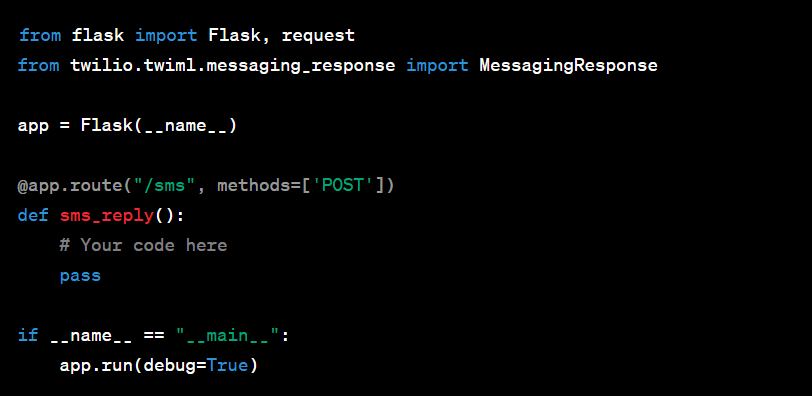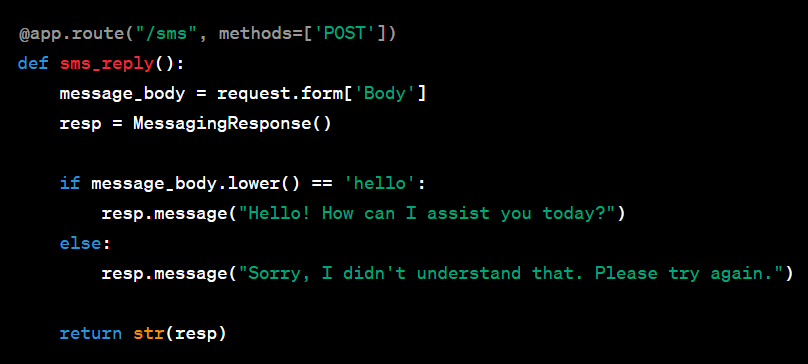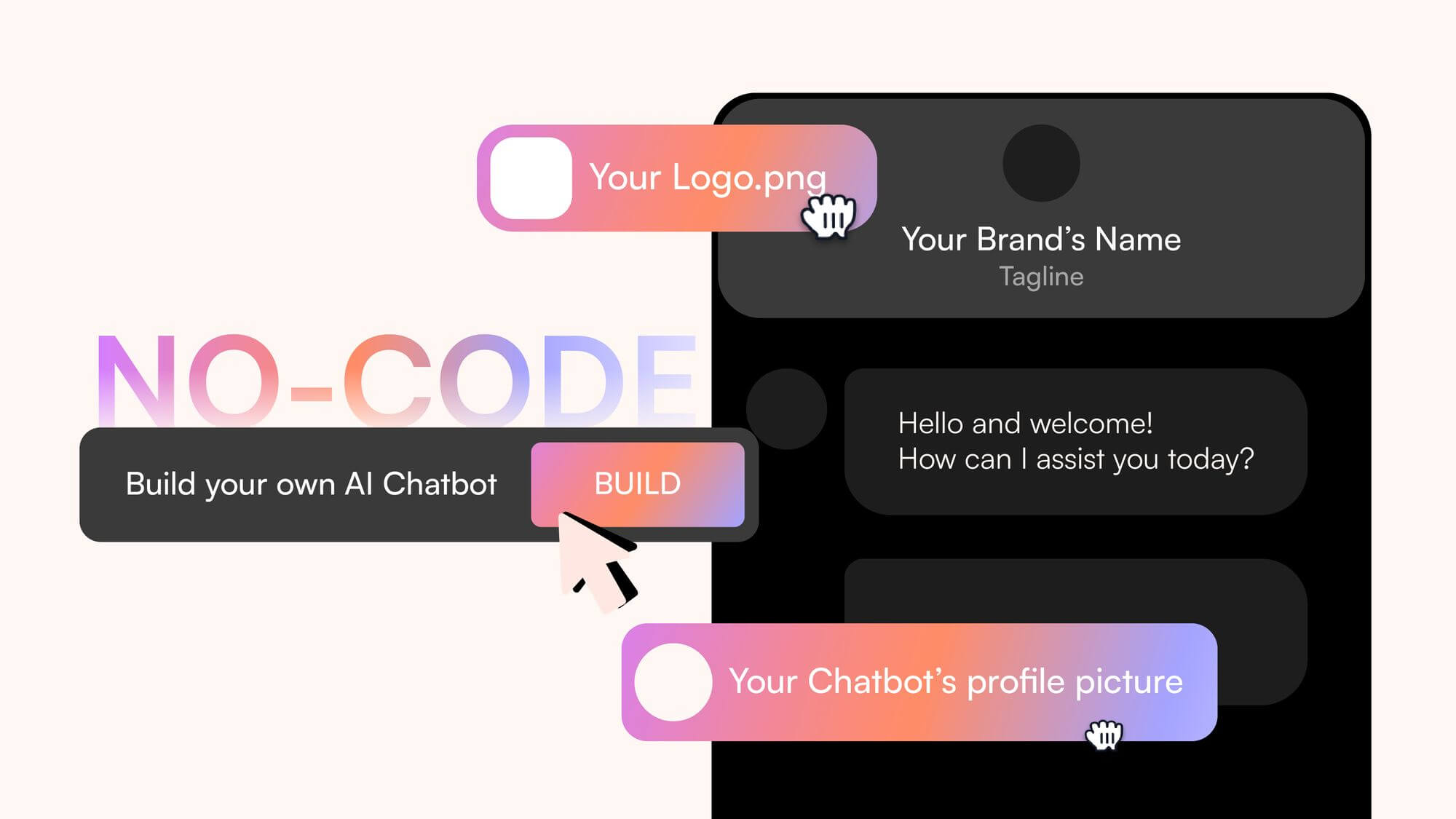Want to create a WhatsApp chatbot for your business? Well, there is more than one way to build a WhatsApp bot! And, we are going cover all the required steps that you will need to build one.
WhatsApp has more than 2 billion active users, making 1 in every 4 people in the world a WhatsApp user. India, Brazil, and Italy are among the top countries where the messaging platform has the highest penetration rate. In these parts of the world, WhatsApp is simply synonymous with communication and is often used as a ‘Verb’ for that matter!
Want to be at the top of your customer interaction game? An AI chatbot for WhatsApp can simply transform the way you interact with your customers!
‘How?’ you ask! Well, that’s what this blog is about!
Here, we will explore why using a WhatsApp chatbot can be a transformative decision for your business.
🌟Spoiler Alert: We also have a guide on building an AI chatbot for WhatsApp with no coding skills to make things easier for you.
So, let’s get started!
What is a WhatsApp chatbot, and why use one?
As a business, you need to be where your audience is. And when you know that 26% of the human population uses WhatsApp to communicate, for obvious reasons, that’s where you want to take your business.
A WhatsApp chat bot can automate customer communication and offer your customers a personalized experience while communicating through the platform. With almost 80% of consumers saying that they are more likely to buy from a business that provides a personalized experience, it’s a testament to the fact that we are living in the era of personalization.
When it’s about offering personalized communication, nothing can beat WhatsApp’s potential as a platform. Therefore, as you start using a WhatsApp chatbot to handle your customers, the chances are high that they will find your brand accessible and much easier to connect with.
How to create a WhatsApp chatbot? A step-by-step guide
Part 1: Through Python coding
Creating a WhatsApp chatbot using Python requires some technical know-how, but don’t worry. We’ll guide you through the process. Here are the steps:
1. Setup your development environment:
- Install Python: Ensure you have Python installed on your machine. You can download it from the official website.
- Setup virtual environment: It’s a good practice to create a virtual environment for your project to manage dependencies.
2. Install necessary libraries:
- Install the necessary libraries and frameworks. For this tutorial, we’ll use Twilio’s WhatsApp API and Flask.
3. Create a Twilio account:
- Sign up for a Twilio account and obtain your Account SID and Auth Token.
- Get a Twilio phone number that’s enabled for WhatsApp.
4. Setup your Flask application:
- Create a new Python file (e.g., app.py) and set up a basic Flask application.
5. Implement your Chatbot logic:
- Within the sms_reply function, implement the logic for your chatbot. This is where you’ll handle incoming messages and generate responses.
6. Test your Chatbot:
- Run your Flask application and use the Twilio WhatsApp sandbox to test your chatbot. Make sure it responds as expected to various inputs.
7. Deploy your application:
- Once you’re satisfied with how your chatbot is working, deploy your Flask application to a server.
8. Configure Twilio Webhook:
- In your Twilio console, configure the webhook for your WhatsApp number to point to the URL of your deployed application.
This concludes the Python coding approach to creating a WhatsApp chatbot. In the next section, we’ll explore a no-code solution for those who prefer a simpler, code-free approach.
Part 2: Using Botsonic – A no-code solution
You can build a WhatsApp chatbot with a no-code AI chatbot builder like Botsonic in minutes. As one of the best customer service chatbot platforms, Botsonic offers a seamless pathway to create and integrate an AI chatbot with WhatsApp.
Here are the steps to build your chatbot using Botsonic,
Step 1: Sign up
- Sign up on Writesonic and visit bot.writesonic.com to open the Botsonic Dashboard.
- Now, click on the Create a Support Bot button under the Welcome to Botsonic card.
Step 2: Upload your knowledge base
- On the Botsonic Dashboard, locate and click on the ‘Sources’ section.
- Upload your knowledge base files containing information about your organization that the AI will use to answer queries and click the Upload and Train button.
- You can upload files using drag-and-drop or selecting them from your computer. The accepted file formats are PDF, DOC, and DOCX.
- To refer to a website, enter its URL.
- You can also drag and drop your sitemap or copy-paste a link to train your AI chatbot on your sitemap.
- If you have FAQs, you can upload them in bulk using a CSV file.
- Have all your business data saved on Notion? You can integrate Notion to train the chatbot with that data.
Step 3: Customize your chatbot from Settings
You can customize your AI chatbot to align it with your brand’s guidelines.
- Customize bot appearance:
- Click on the Appearance tab under settings.
- From there, add your company name, logo, chatbot picture, color, subheading, input placeholder, welcome message, and chatbot guidelines.
- You can also select the quality of the AI engine, response length, language, widget position, and more.
- Once done, click on the Save button at the bottom.
2. Change Bot settings:
Under the Bot settings, set your chatbot with proper guidelines. Follow the steps here,
- First, under the Bot template section, choose what template you need and then select your response length.
- Put your Chatbot guidelines as a description within the box.
- Set how many messages you want to spend on each user per day.
- Next, set a user limit warning message when the maximum number of messages is reached.
- Click Save again once you are done.
Step 4: Set up starter questions
- Add a predefined set of questions and responses that your bot will use whenever the given questions are asked.
Step 5: Collect user data
- Choose what information you want your customers to enter before they start chatting with your AI chatbot.
- You can select whether to offer your customers a pre-chat form from this window or not.
Step 6: Integrate Botsonic
Now, your bot is ready to be integrated. You can integrate it on your website as well as on WhatsApp. Here is how to do it:
- From the upper menu bar, click on the Share button.
- Now, you can either choose to embed the chatbot script directly into your website’s code or embed the Iframe. Also, you can use the API Key to add the chatbot through Rest API.
- Next, click on the Integrations tab, and under Available Integrations, click on View under Whatsapp from the list.
- Then, you will be redirected to the setup page. Click on the Setup Now button.
- Under the pop-up window, enter your WhatsApp permanent access token and click on the Save button.
- Once the connection is established successfully, you will get a Webhook ID and token.
- Now, go to your WhatsApp business account settings and add the Webhook ID and token.
- Finally, verify if the connection is successful. Your WhatsApp chatbot is ready to delight your customers with real-time assistance.
Step 7: Track Usage
Once you’ve integrated Botsonic into your project, you can track usage and check the Analytics to understand and refine your WhatsApp chatbot conversation.
- Click on the Inbox button from the upper menu bar and check your customer interaction.
- Then, to understand what kind of resolution your audience likes, check the Analytics section.
You can track the total number of words used, the total number of messages generated, and the total number of conversations done over a selected period of time range.
💡
Looking to create a similar Facebook Messenger Chatbot? Read our blog to know how you can do it with ease.
Now that you understand the easy ways to build a WhatsApp chatbot, you can use it to introduce the power of AI in the customer service of your business.
Not sure? You must check out the benefits.
Top 6 benefits of using an AI-powered WhatsApp chatbot
From offering you better customer reach to enabling personalized promotions and support, a WhatsApp AI chatbot can solve various business problems. In fact, it can transform the way you interact with your customers.
Here are the top 6 benefits of using a WhatsApp chatbot for your business,
1. Reach
WhatsApp is available in 20+ different languages across 180 countries. So, talking about the reach of a WhatsApp chatbot, that’s the kind of global accessibility it can offer you.
Thus, integrating an AI chatbot into your WhatsApp business API isn’t just about following a trend; it’s about meeting your customers where they already are. Moreover, you can effortlessly generate leads with an AI chatbot.
Additionally, WhatsApp chatbot offers you,
- A global audience reach: WhatsApp, with its strong presence globally, can give you access to a vast user base across different demographics and regions.
- Better customer accessibility: A WhatsApp chatbot allows you to be there where your audience is communicating. With a personalized AI chatbot on WhatsApp, customer interactions become convenient.
- Opportunity for market expansion: By creating a WhatsApp AI Chatbot, you can ensure multilingual support and get opportunities to tap into new markets and customer segments.
2. Availability
Availability is synonymous with reliability in the digital age. Customers value prompt responses. A WhatsApp chatbot ensures your business is always accessible to customers, allowing you to leverage WhatsApp automation to maintain constant communication.
With a dedicated chatbot for WhatsApp, you get:
- 24/7 response: Ensures no query goes unanswered, regardless of the hour.
- Customer satisfaction: Prompt responses enhance customer satisfaction and trust.
- Competitive edge: Stay ahead of competitors who may not offer round-the-clock support.
Read more: Integrate live chat into your website to ensure 24×7 availability for your consumers.
3. Efficient query handling
Efficiency in handling customer queries can significantly enhance the user experience. Best AI chatbots excel in providing swift, accurate responses. For example, a chatbot can instantly provide answers to frequently asked questions like store operating hours, product availability, or order status.
- Automated responses: Swiftly address common queries without human intervention.
- Resource allocation: Free up human resources for more complex, personalized interactions.
- Customer experience: Enhance user experience with quick, accurate responses.
4. Personalized engagement
Personalization is the cornerstone of modern customer engagement. A chatbot can recall previous interactions and preferences to provide personalized responses.
- Tailored Responses: Deliver personalized responses based on past interactions and preferences.
- Customer Retention: Build stronger relationships and loyalty through personalized engagement.
- Enhanced Shopping Experience: Offer product suggestions and offers tailored to individual preferences.
5. Rich media sharing
WhatsApp chatbots aren’t limited to text-based interactions. They can share various media to enrich the communication experience. For instance, if a customer inquires about a particular product, the chat bot can share images or videos of the product, providing a visual and more engaging response.
- Visual engagement: Share images or videos for a more engaging interaction.
- Instructional content: Deliver instructional videos or PDF guides for service-related queries.
- Diverse communication: Utilize a variety of media to convey information effectively.
6. Targeted promotions
Utilizing chatbots in marketing for segmented and targeted promotions can lead to better engagement rates. For example, sending personalized offers or discounts to specific customer groups based on their past interactions or preferences.
- Segmented messaging: Send promotional messages to specific customer segments for better engagement.
- Increased conversion: Tailored promotions can lead to better conversion rates.
- Customer relevance: Ensure promotions are relevant to the recipient, enhancing their experience.
Have a look at the 10 best AI chatbots that you can try out.
Wrapping up: Start with your WhatsApp chatbot journey
By integrating a WhatsApp chatbot into your business, you can simply open up a new, advanced way of customer interaction. The steps we have outlined here will guide you through the process of building your own customized chatbot.
Whether you choose to build your WhatsApp chatbot from scratch using Python or opt for a no-code solution like Botsonic, the key is to ensure that your chatbot is well-equipped to handle customer queries efficiently and in a friendly manner. Remember, the effectiveness of your WhatsApp chatbot will largely depend on how well it’s been trained and customized to align with your brand’s ethos and your customers’ expectations.
Now that you have a roadmap, it’s time to roll up your sleeves and dive into the exciting world of chatbots on WhatsApp. The future of customer interaction is here, and it’s automated, personalized, and more engaging than ever before.
FAQs
Can I add a chatbot to WhatsApp?
Yes, you can add a chatbot to WhatsApp to automate conversations and provide instant responses to user queries. Simply use the no-code AI chatbot builder Botsonic to create your ChatGPT-powered personalized chatbot. Once created, you can integrate the AI bot with your WhatsApp Business account.
Can I create a WhatsApp chatbot for free?
Yeah, you can create a WhatsApp chatbot even for free. Thanks to the freemium plan Botsonic has! You can simply sign up, and Botsonic will give you access to build your fully functional AI Chatbot that can send up to 100 messages per month for free.
How much does the WhatsApp chatbot cost?
As mentioned earlier, you can create an AI chatbot for free with Botsonic and integrate it with WhatsApp. However, for more features and higher usage limits, Botsonic has a Plus Plan that starts from $16.67 per month. However, the pricing can vary based on the number of messages, bots, and other additional features you opt for. Check the Botsonic Pricing Page for more details.
Additionally, while creating a WhatsApp chatbot, you need to pay for the WhatsApp business API key to the platform.
Is WhatsApp API free?
No, the WhatsApp API isn’t entirely free. While accessing the API itself is free, WhatsApp charges for Business and User Initiated Conversations. The rates vary for different countries.
Additionally, if you utilize a platform based on the WhatsApp Business API, like Twilio, Brevo, or AiSensy, you need to pay platform charges to them. The WhatsApp API is designed as a scalable tool for medium to large businesses, charging per session in a conversation-based pricing model.








































